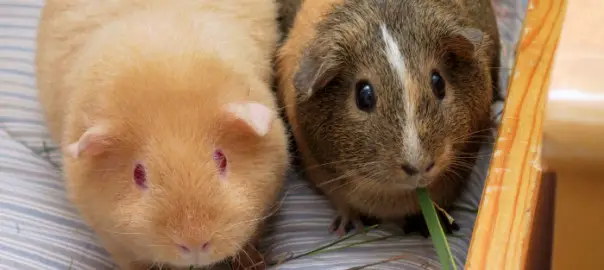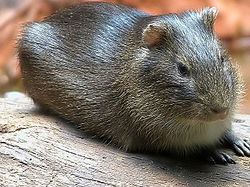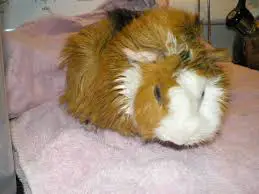The Teddy guinea pig has been getting more popular amongst guinea pig owners. They are drawn to their lovely coats, warm personalities and low maintenance.
They are often mistaken for Amercian guinea pigs but they are actually different from them.
So to get to know them, here are 30 things to know about the Teddy Guinea Pig.
- Teddy guinea pigs get their name from their resemblance to a stuffed teddy bear. Particular in regards to their fur.
- The teddy guinea pig is a non-self variety
- The Teddy bear is a main classified breed
- Much like other breeds of guinea pig, they live between 6-8 years.
-
The Teddy guinea pig has a dense and fuzzy coast and the hairs stand on end
- Teddy guinea pigs have dryer skin than other guinea pig breeds
- Teddy guinea pigs don’t need more than 3 baths each year because most of the time they self groom.
- Their hair is not high maintenance.
- They do get dirtier ears than other breeds so you will need to check their ears at least twice a month and get rid of any wax that builds up.
-
The teddy guinea pig is the result of a mutation of a tortoise shell and a white American guinea pig.
- They Teddy guinea pig was first produced as a guinea pig variety in 1967
- Their coat is rougher than that of an American guinea pig, shorter and does not have the rosettes that the American has.
- The Teddy guinea pig has a coat that is kinky and thick giving it a fluffy appearance
- Teddy guinea pigs don’t have a problem with hair matting like other guinea pig breeds
-
The Teddy guinea pig has a medium length body
- its nose has a prominent bridge which looks like it is bent
- They were officially recognized by the American cavy breeders association in 1974.
- It is not possible to breed proper teddy guinea pigs by cross breeding as its now a breed in its own right
- They have an upturned nose also found on an american guinea pig. It is much wider and curvier than other guinea pigs noses.
-
Just like other guinea pigs, their teeth are constantly growing.
- Teddy guinea pigs need much the same food and water as any other guinea pig.
- They much prefer to be kept indoors but can be kept outside if the temperature is right.
- Like other guinea pigs, they prefer temperatures between 41-59 degrees farenheit.
- They always need to chew so require a constant supply of hay so as to grind down their teeth.
-
Teddy guinea pigs need water to be constantly available much like other guinea pigs.
- They enjoy eating veggies and some fruit.
- Grooming a teddy bear requires a little more thought than that of an american guinea pig.
- Try and brush your teddy guinea pig once a week
- Using a slicker brush will also help lessen hair shedding.
- In fact, ising a slicker brush will help to get rid of looser hair.
- A good way to brush a teddy guinea pig’s coat is to pet and brush them head to rump (or vice versa) so that it goes flat.


